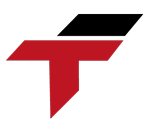Human Machine Interface (HMI) programming software plays a vital role in modern industrial automation by bridging the gap between operators and machines. From intuitive control screens to real-time data visualization, HMI software empowers engineers to design efficient, safe, and connected production environments.
What Is HMI Programming Software and How Does It Work?
HMI programming software is used to design and manage the interfaces that allow operators to monitor and control machines. It connects seamlessly with PLCs, SCADA systems, and industrial controllers, enabling engineers to configure visual dashboards, alarms, and controls that simplify complex automation tasks.
The software works through a layered architecture involving input devices, communication protocols, and visualization tools. It facilitates data exchange between PLCs and operator panels in real time, ensuring smooth control and monitoring. Popular industrial protocols such as Modbus, Ethernet/IP, and Profinet are often used for seamless integration.
Most HMI software supports multiple hardware brands like Siemens, Mitsubishi, Omron, and Allen-Bradley. This flexibility allows manufacturers to customize interfaces across various platforms and streamline operations through consistent design and functionality.
What Is HMI Programming Software and How Does It Work?
What Are the Key Features of Modern HMI Programming Software?
Modern HMI software includes drag-and-drop design tools and graphical libraries, enabling engineers to build intuitive control panels quickly. These visual editors reduce development time and make it easier to create screens with buttons, indicators, and animations that improve operator interaction.
Real-time data monitoring is another core feature. HMI software provides live status updates, trend charts, and alarm notifications that help detect performance issues early. This supports predictive maintenance and reduces downtime, boosting overall system efficiency.
Connectivity is equally important. The latest HMI platforms support various communication protocols to ensure compatibility with diverse PLCs and industrial networks. This capability enhances flexibility in both new installations and system upgrades.
Which Are the Most Popular HMI Programming Platforms?
Siemens WinCC, integrated within the TIA Portal, is widely used for scalable visualization and diagnostics. It provides powerful tools for designing interactive screens, managing data logs, and implementing automation scripts for Siemens PLCs.
Mitsubishi’s GT Designer3 works seamlessly with GOT panels and GX Works, offering engineers advanced customization, real-time graphics, and intuitive integration with Mitsubishi PLC and drive systems. It’s favored for its simplicity and reliability in industrial environments.
Omron’s NB Designer and Sysmac Studio allow users to create multilingual, data-driven interfaces for machine control. Similarly, Allen-Bradley’s FactoryTalk View Studio delivers scalable solutions for everything from standalone HMI panels to enterprise-level SCADA visualization.
How Does HMI Software Integrate with Other Automation Systems?
Integration with PLCs is at the core of HMI software functionality. Engineers use tag mapping and ladder logic synchronization to enable fast data exchange between controllers and HMI screens, optimizing system response and accuracy.
When integrated into SCADA systems, HMI software serves as the operator’s interface for supervisory control. It collects and visualizes data from multiple devices, giving operators an overview of system performance at different control levels.
With the rise of Industry 4.0, many HMIs now support IoT and edge connectivity. This enables cloud-based monitoring, smart dashboards, and mobile access—key components of Malaysia’s growing smart manufacturing ecosystem.
What Are the Benefits of Using Advanced HMI Programming Software?
What Are the Benefits of Using Advanced HMI Programming Software?
Advanced HMI software improves operator efficiency and safety through intuitive visualization and alarm systems. Clear graphical displays reduce human error and help operators respond quickly to critical events.
Maintenance becomes simpler with remote HMI access. Engineers can diagnose faults, perform updates, and monitor performance from anywhere, minimizing downtime and maintenance costs.
Furthermore, HMI systems provide valuable insights through data analytics and historical trends. These insights help manufacturers make informed decisions, optimize production processes, and support continuous improvement.
How Can Businesses Choose the Right HMI Programming Software?
Choosing the right HMI software depends on compatibility with existing PLC hardware, scalability needs, and cost considerations. Businesses should evaluate whether the platform supports their current automation ecosystem and offers flexible licensing options.
Working with local automation integrators or vendors can make implementation smoother. Malaysian companies such as Flextech and other certified partners provide technical support, training, and custom solutions tailored to local industries.
By selecting the right HMI software and trusted partners, businesses can enhance productivity, ensure seamless integration, and future-proof their automation systems.


